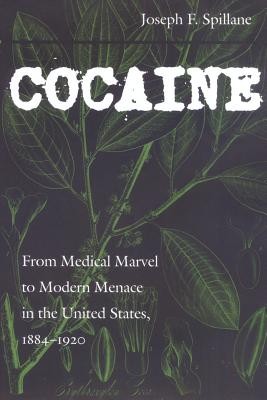
- We will send in 10–14 business days.
- Author: Joseph F Spillance
- Publisher: Johns Hopkins University Press
- ISBN-10: 0801871166
- ISBN-13: 9780801871160
- Format: 15.5 x 24.7 x 1.5 cm, softcover
- Language: English
- SAVE -10% with code: EXTRA
Reviews
Description
Winner of the Addiction Book Award from the Society for the Study of Addiction
In 1884 American physicians discovered the anesthetic value of cocaine, and over the next three decades this substance derived from the coca plant became so popular that it became, ironically, a public health problem. Demand exceeded supply; abuse proliferated. The black market produced a legendary underground of "cocaine fiends." As attempts at regulation failed, Congress in 1914 banned cocaine outright, and America launched its longstanding war against now-illegal drugs.
Challenging "traditional thinking about both the 'rise' and 'fall' of drug problems" (which makes legal prohibition the pivotal point in the story), Spillane examines phenomena that have eluded earlier students of drug history. He explores the role of American business in fostering consumer interest in cocaine during the years when no law proscribed its use, the ways in which authorities and social agents tried nonetheless to establish informal controls on the substance, and the mixed results they achieved.
In asking how this pain-allaying drug became recognizably dangerous, how reformers tried to ameliorate its social effects, and how an underground of cocaine abusers developed even before regulation of the drug industry as a whole, Spillane discovers contingency, complication, and mixed motives. Arguing that the underground drug culture had origins other than in federal prohibition can tell us as we face questions about drug policy today.
EXTRA 10 % discount with code: EXTRA
The promotion ends in 17d.20:29:53
The discount code is valid when purchasing from 10 €. Discounts do not stack.
- Author: Joseph F Spillance
- Publisher: Johns Hopkins University Press
- ISBN-10: 0801871166
- ISBN-13: 9780801871160
- Format: 15.5 x 24.7 x 1.5 cm, softcover
- Language: English English
Winner of the Addiction Book Award from the Society for the Study of Addiction
In 1884 American physicians discovered the anesthetic value of cocaine, and over the next three decades this substance derived from the coca plant became so popular that it became, ironically, a public health problem. Demand exceeded supply; abuse proliferated. The black market produced a legendary underground of "cocaine fiends." As attempts at regulation failed, Congress in 1914 banned cocaine outright, and America launched its longstanding war against now-illegal drugs.
Challenging "traditional thinking about both the 'rise' and 'fall' of drug problems" (which makes legal prohibition the pivotal point in the story), Spillane examines phenomena that have eluded earlier students of drug history. He explores the role of American business in fostering consumer interest in cocaine during the years when no law proscribed its use, the ways in which authorities and social agents tried nonetheless to establish informal controls on the substance, and the mixed results they achieved.
In asking how this pain-allaying drug became recognizably dangerous, how reformers tried to ameliorate its social effects, and how an underground of cocaine abusers developed even before regulation of the drug industry as a whole, Spillane discovers contingency, complication, and mixed motives. Arguing that the underground drug culture had origins other than in federal prohibition can tell us as we face questions about drug policy today.


Reviews